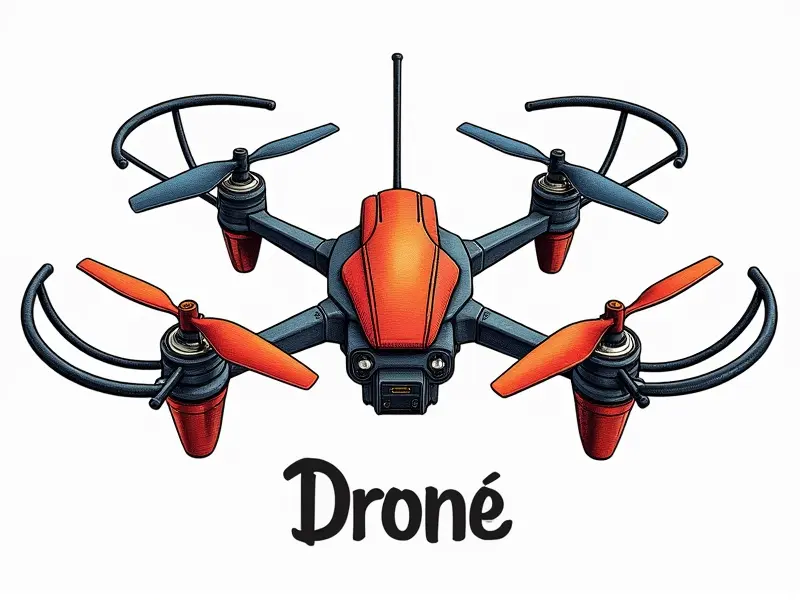What's the range of drone GPS?

How Far Can My Drone Go with GPS?
The range of drone GPS varies significantly depending on several factors, including the type of drone and its intended use. Understanding how far your drone can travel while maintaining a reliable GPS signal is crucial for both recreational and commercial applications.
Maximum Distance of Drone GPS
The maximum distance a drone can fly with GPS depends largely on the quality of the GPS module, the strength of the satellite signals, and environmental conditions. Typically, most consumer drones have a range of around 1 to 2 kilometers from the controller, but this can extend up to 5 kilometers in optimal conditions.
Best Practices for Drone GPS Range
- Choose High-Quality Components: Opt for drones with advanced GPS modules and robust signal processing capabilities.
- Maintain Regular Maintenance: Keep your drone's hardware clean and free from obstructions that might interfere with the GPS signal.
- Update Firmware Regularly: Ensure you have the latest firmware updates to take advantage of improved GPS algorithms and features.
Factors Affecting Drone GPS Distance
The distance your drone can travel while maintaining a strong GPS signal is influenced by several factors:
- Satellite Visibility: The number of visible satellites affects the accuracy and reliability of the GPS signal.
- Terrain Interference: Mountains, buildings, and other obstacles can block or weaken satellite signals.
- Electromagnetic Interference (EMI): Radio frequencies from nearby devices can disrupt GPS communication.
- Atmospheric Conditions: Weather conditions such as rain, fog, and solar storms can degrade GPS performance.
Enhancing Drone GPS Signal Range
To maximize your drone's GPS range, consider the following strategies:
- Use High-Gain Antennas: Install external antennas to improve signal reception and transmission.
- Select Optimal Flight Locations: Choose open areas with minimal obstructions for better satellite visibility.
- Implement GPS Assist Technologies: Utilize technologies like RTK (Real-Time Kinematic) or PPK (Post-Processed Kinematic) to enhance accuracy and reliability.
Real-World Drone GPS Range Tests
Several real-world tests have been conducted to determine the actual range of drone GPS systems. These tests typically involve flying drones in various environments, including urban areas with high-rise buildings, rural landscapes, and mountainous regions. The results often show that while theoretical ranges can be impressive, practical limitations such as terrain and interference significantly reduce effective range.
Understanding Drone GPS Limitations
It is essential to understand the inherent limitations of drone GPS systems:
- Signal Degradation: As distance from the controller increases, signal strength decreases, potentially leading to loss of control or reduced accuracy.
- Environmental Constraints: Certain environments pose significant challenges for maintaining a stable GPS connection.
- Regulatory Restrictions: Many countries have regulations limiting how far drones can fly from the operator.
Optimizing GPS Range for RC Quadcopters
For remote-controlled quadcopters, optimizing GPS range is crucial for extended flight capabilities. Here are some tips:
- Upgrade to RTK or PPK Systems: These advanced technologies provide centimeter-level accuracy and reliability.
- Install External Antennas: High-gain antennas can significantly extend the range of your GPS signal.
- Select Flight Paths Wisely: Plan routes that avoid dense urban areas or heavily forested regions to minimize interference.
The Impact of Terrain on Drone GPS Range
Terrain plays a critical role in determining the effective range of drone GPS signals. Mountains, tall buildings, and dense foliage can obstruct satellite signals, reducing accuracy and reliability:
- Urban Environments: High-rise buildings and other structures create signal shadows that limit GPS performance.
- Rural Areas: Open fields generally offer better visibility to satellites but may lack infrastructure for RTK or PPK systems.
- Mountainous Regions: Steep terrain can block satellite signals, making it challenging to maintain a stable GPS connection.
Tips to Maximize Your Drone's GPS Range
To get the most out of your drone’s GPS capabilities, follow these tips:
- Monitor Satellite Visibility: Use apps or built-in features to check how many satellites are visible and their signal strength.
- Avoid Electromagnetic Interference: Stay away from sources of radio frequency interference such as cell towers, Wi-Fi routers, and other electronic devices.
- Test in Various Environments: Conduct tests in different terrains to understand the limitations and optimize your flight plans accordingly.
Exploring the Boundaries of Drone GPS
The boundaries of drone GPS range are continually being pushed by advancements in technology. As new systems like RTK and PPK become more accessible, drones can achieve unprecedented levels of accuracy and reliability over greater distances:
- Innovative Antenna Designs: New antenna technologies are emerging to enhance signal reception and transmission.
- Advanced GPS Algorithms: Improved algorithms are being developed to better handle interference and maintain stability in challenging environments.
- Regulatory Changes: As technology evolves, regulatory bodies may adjust restrictions to accommodate new capabilities.

